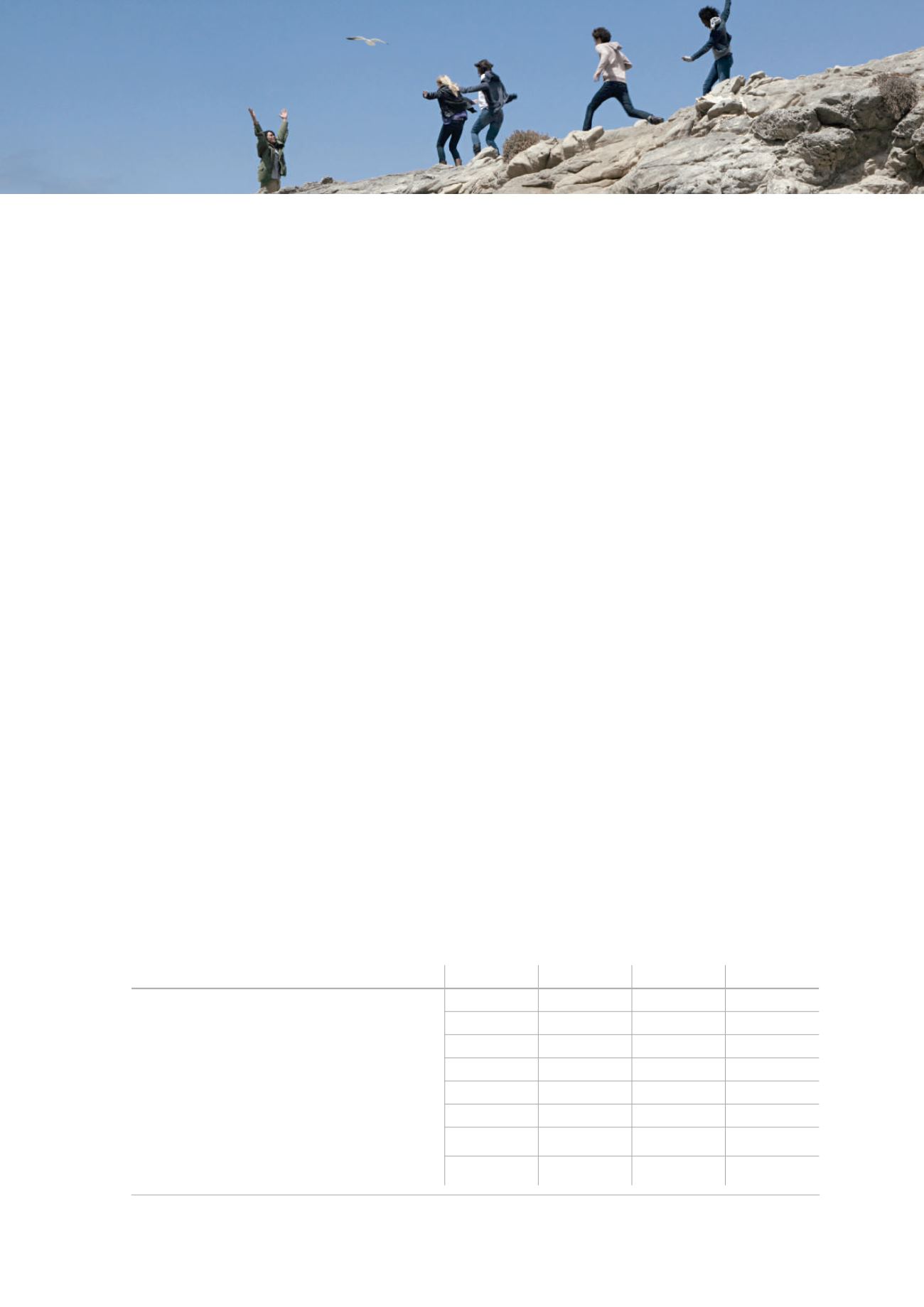
64
DOLPHINENERGY
SUSTAINABILITYREPORT2015
WaterManagement
Watermanagement isan increasingly
critical issue in theoil andgas industry,
especially theuseof freshwater in
operations. This is anespecially
salient issue incountries suchas
Qatar and theKuwaitwhere freshwater
resources are scarce.We recognize
the significanceof thecost of
producing freshwater, its impact on
the local communities, and thegreat
need forwater conservationand
recycling inour operations,which is
whywemanageour consumption to
thebest of our ability.
DolphinEnergy’sKuwaitandQatar
facilitiesutilizedesalinatedwater
for anumber of purposes, including
steamgenerationanddomestic
use.We recycle thiswater in
severalways. Lowpressure steam
condensatesbecome feedwater for
the steamboilers. Domestic sanitary
effluents andwashwater arecollected
and treated, thenmixedwith treated
oilywater and theboiler blowdown
water from steamboilers toproduce
water used for irrigationpurposes
of about 60,000m2areawithin
DolphinEnergy’sRasLaffanPlant.
Thegreenbelt areawithin theDolphin
Energyplantmeets the regulatory
requirement for provisionof 3.5%
landscaping inside theplant fence.
Thewaterwe return to the
environment is treatedand
cleaned tomeet our ownhigh
internal standards andachieves full
compliancewith local regulations.
Producedandprocesswater is
treatedat theonsitewastewater
treatment facilities and re-injected
into shorewater-bearing reservoirs
via twowastewater injectionwells.
Cooling seawater is returned to
RLIC’s commoncooling seawater
network, followingcoolingof the
closed-loopTemperedCooling
Water network.
In2015,weprogressed several
initiatives to improve thequalityof
re-injectedwastewater. Duringcold
weather, KineticHydrate Inhibitor
(KHI) is injected intoour sealine to
slow the formationof hydrateswhich
canblockour sealines and slug
catcher. As a result, KHI becomes
acontaminant of our re-injected
wastewater.Wehaveworked to
minimize theamount of KHI being
injectedduringcoldweather
without jeopardizingproduction
andavailability, by lowering the
temperature thresholds atwhichwe
injectKHI dependingon the intensity
of thewinter season. Thiswill avoid
any significant lossof injectivity
of the re-injectionwells andwill
allowDolphinEnergy tocontinue
re-injectionofwastewater for the
remaining lifetimeof the facility.
During2015,wealsocompleted
studies to improve theeffectiveness
ofpHcontrol of thewastewater
being re-injected.One resulting
recommendationof thesestudies
was to inject abuffer solution into the
wastewater feeding theequalization
tank fromwhichwastewater is
re-injected.Once implemented,
thepresenceof thisbuffer in the
wastewaterwill permitmoreprecise
control of re-injectionwaterpH
downstream, andwill avoid the
fluctuations in re-injectionwaterpH
thathavebeenobservedhistorically.
Therewas an 11% increase inour
water consumption intensity in
2015due toan increase inboiler
feedwater consumptionbecause
of leaks inour sulfur recoveryunit
(SRU1), and theuseof excesswater
tomakeup for the temperedcooling
water systemand to reduce the
highchloridevalue in the tempered
coolingwater system.
Water Consumption (m3)
2012
2013
2014
2015
TotalWaterConsumption
1,186,086
1,038,000
1,015,346
1,076,577
Qatar
1,141,086
1,004,039
966,928
1,069,355
Kuwait
45,000
34,322
48,418
7,222*
WaterConsumption Intensity (1000m
3
/MMboe)
5.7
5.0
4.9
5.5
WaterRecycledorReused
146,000
140,320
138,104
154,634
WaterRecycledorReused (%)
12
14
14
14
Non-contactCoolingWater
116,448,000 109,815,317
106,912,131
105,691,764
Deep-Well Injectionof ContaminatedWastewater
552,639
514,049
465,935
460,025
* The companydidnot receive twowater bills,whichaffected thewater consumption rates.
Protect theEnvironment
05


